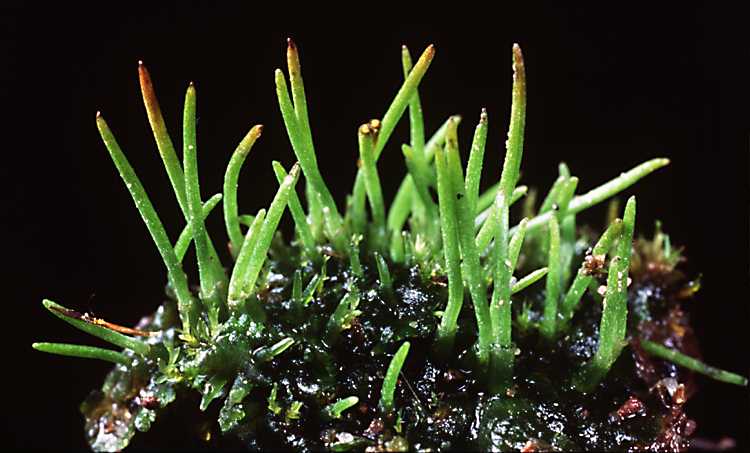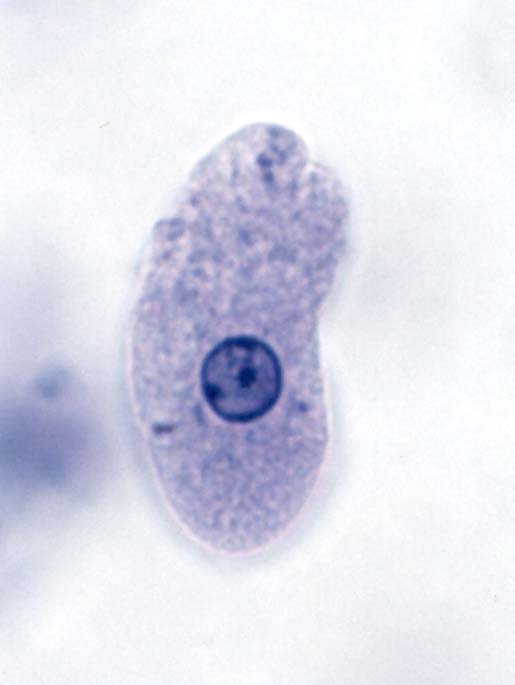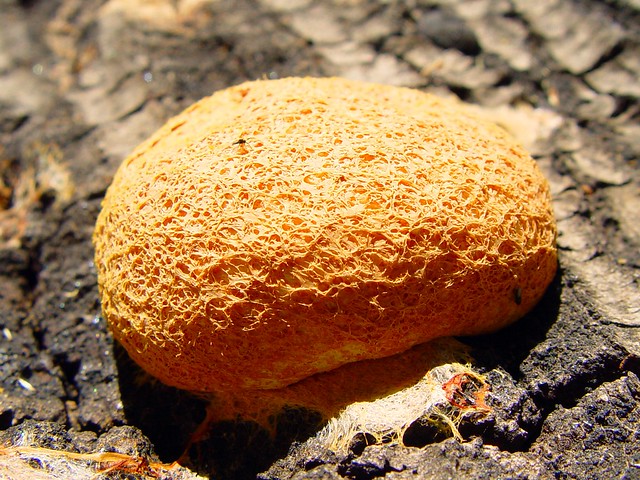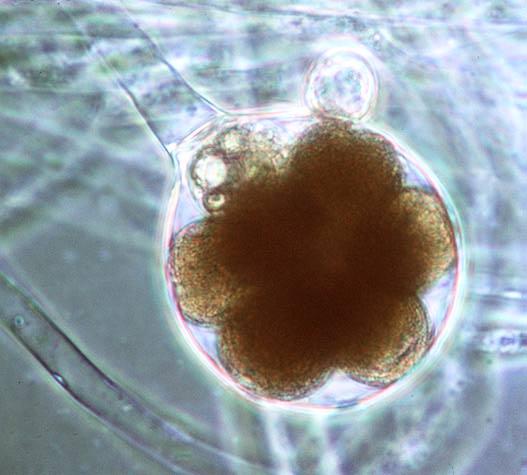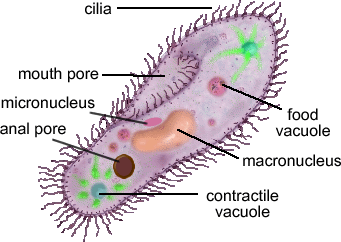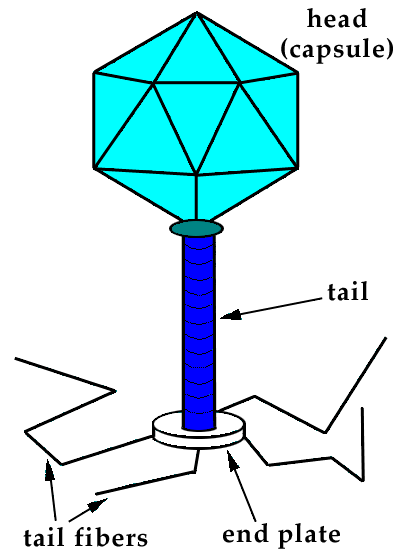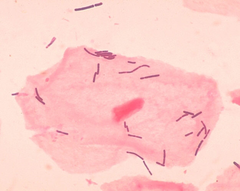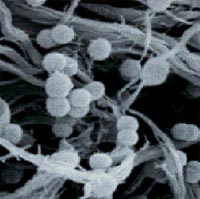Extremophiles> Psychrophile> Grylloblattidae
Psychrophile-
Psychrophiles or cryophiles are considered to be an extremophile organism. They are capable of growing and reproducing in cold temperatures that range from −15°C to +10°C. When temperatures are as low as −15°C they could be found in pockets of very salty water surrounded by sea ice. They are present in alpine and arctic soils, high-latitude and deep ocean waters, polar ice, glaciers, and snowfields.
Grylloblattidae is a family of the extremophiles. They are wingless insects that live in the cold on top of mountains. They are usually called grylloblattids. They were discovered by T E.M. Walker and T.B. Kurata and concluded that most are nocturnal and appear to feed on detritus. They have long antennae (23–45 segments) and long cerci (5–8 segments), but they contain no wings.
SOURCES: http://en.wikipedia.org/wiki/Extremophile
Images from google.
Saturday, January 21, 2012
Time, Love, Memory: Entry #2 Important Key Points
Three Key Points:
The first key point in the book is DNA the genes of the organisms that they studied over. For the most part their study was on fruit flies and about them crossing over and seeing the dominant and recessive traits that were given by the parent flies, also known as sex linked traits. This is what we basically did on the online lab with drosophila flies the other day, Benzer and his colleagues basically did the same thing as us in finding out the genes and traits that came from each offspring. DNA played an important role during this time because in the book, while Benzer was conducting his experiment on the way animal behavior of flies, Watson and Crick made their big discovery on DNA. This later helped Benzer when him and the other scientists began to work together in search of the genes of the fruit fly. It also helped with them finding out about eugenics and how it affected the Germans.
The second key point in the book is animal behavior. From our ecology chapters we learned about taxis and kinesis from our worm lab and how some behaviors are learned and innate. We have kinesis which is a movement that is random and does not result with respect to the stimulus and we also have taxis which is a direct response to the stimulus. Every since chapter 1, we've seen the effects of animal behavior in the different environments that the flies were placed in. We've seen them being place in tubes that resemble panpipes and to see how they react in the light and dark regions, and we've also seen the flies move towards the edge in an experiment only to find out later by Benzer that it was because some of the flies contained traits that inhibited them from having good vision.
The third key point in the book is structure of the fly as well as other structures in the body's of other organisms. Throughout the entire book we've look at structure and organization, which is one of the main themes of biology. We've looked at parts of the flies in terms of eyes, wings, body shape, etc. As for other species, we've looked at the brains of other organisms as well as optic nerves and the nervous system itself. A main part of the book was about structure and organization because Benzer and them were trying to find the genes that were influenced by the offsprings parents. By looking at different parts of the body structures they were able to tell which traits were passed on. They also looked at different body shapes and structures because it would help them determine which animal was in better use for the experiments they were doing.
The first key point in the book is DNA the genes of the organisms that they studied over. For the most part their study was on fruit flies and about them crossing over and seeing the dominant and recessive traits that were given by the parent flies, also known as sex linked traits. This is what we basically did on the online lab with drosophila flies the other day, Benzer and his colleagues basically did the same thing as us in finding out the genes and traits that came from each offspring. DNA played an important role during this time because in the book, while Benzer was conducting his experiment on the way animal behavior of flies, Watson and Crick made their big discovery on DNA. This later helped Benzer when him and the other scientists began to work together in search of the genes of the fruit fly. It also helped with them finding out about eugenics and how it affected the Germans.
The second key point in the book is animal behavior. From our ecology chapters we learned about taxis and kinesis from our worm lab and how some behaviors are learned and innate. We have kinesis which is a movement that is random and does not result with respect to the stimulus and we also have taxis which is a direct response to the stimulus. Every since chapter 1, we've seen the effects of animal behavior in the different environments that the flies were placed in. We've seen them being place in tubes that resemble panpipes and to see how they react in the light and dark regions, and we've also seen the flies move towards the edge in an experiment only to find out later by Benzer that it was because some of the flies contained traits that inhibited them from having good vision.
The third key point in the book is structure of the fly as well as other structures in the body's of other organisms. Throughout the entire book we've look at structure and organization, which is one of the main themes of biology. We've looked at parts of the flies in terms of eyes, wings, body shape, etc. As for other species, we've looked at the brains of other organisms as well as optic nerves and the nervous system itself. A main part of the book was about structure and organization because Benzer and them were trying to find the genes that were influenced by the offsprings parents. By looking at different parts of the body structures they were able to tell which traits were passed on. They also looked at different body shapes and structures because it would help them determine which animal was in better use for the experiments they were doing.
Time, Love, Memory: Entry #1
In Time, Love, Memory, what surprised me the most is how a small fly is able to make a difference in the studies that Benzer, Morgan, and the other scientists conducted. They were able to discover genetic material such as DNA and the recessive and dominant genes that Mendel was able to see form his pea experiment, as well as animal behavior from just this tiny fly. I would have thought that a larger animal would have made a larger impact, but in this case this fly was able to make a bigger discovery than most animals used. Returning back to animal behavior, the author made it important that the audience saw what he was trying to do in his experiments. He was trying to see the behavior of the fly most of the time and why the flies did that. I found it interesting on how the flies moved (taxis and kinesis) depending on what variables that Benzer and his colleagues did in their experiments. What also surprised me was the amount of scientists that were involved in the experiments that Benzer conducted, there were so many who took an interest in this matter and soon it evolved and many of them making important discoveries.
SOURCES: Images from google.
Time, Love, Memory book.
SOURCES: Images from google.
Time, Love, Memory book.
A Fear of Pheromones
In the article "A Fear of Pheromones", it begins off asking questions of why we as humans would even want anything to do with pheromones in the advanced society that we live in. We soon find out that the human being is actually in possession of pheromones and have been for quite some time. Like animals and insects, we are able to use these simple molecules the same way insects use them for communications and other uses. It has been concluded that women who have been living close to each other in the same dorms have their menstrual cycles at about the same time, this is because of a pass of pheromones between the women. Another example would be that fish "make use of chemical signals for the identification of individual members of a species" and because of this fish can tell whether or not they belong in their group of not. I agree with the author about how pheromones might actually do some good to human beings rather than the fear that we live in that we do not need them in our lives like animals and insects.
On Societies as Organisms
In the article "On Societies as Organisms", the author talks about how we as humans think of ourselves to be an individual character and that we are lonely and try to do things independently. As we explore, however, we come to see that we are not just one being but rather a group of people who will make a great difference as a group rather than one individual. We depend on each other and communicate. I agree with the author on this because from his example in the article, he puts that "Herring and other fish in schools are so closely integrated that they seem to be functionally a great multi-fish organism", one single fish in the sea may not seem to do a whole lot, but a whole school of fish in the sea would make a change in whatever they would be trying to do. We as human beings cannot be seen comparing ourselves to species like insects and fish, but after while, we do see the similarities among each other and come to accept the fact that we are not so much different from each other.
Thoughts for a Countdown.
In the article "Thoughts for a Countdown", the author starts off by saying how humans are afraid of things like diseases and foreign objects. We come to the conclusion that if something is foreign then it must be hostile and cannot be touched. The author further says that we soon have to find a way to kill it. He makes this connection by comparing this to foreign life on the moon, by stating that" if there should be life on the moon, we must begin by fearing it". I don't think that this is true and the author would agree with me too. I think, along with the author that although there are some species that are considered to be parasitic, not everything is bad. Instead of everything being a pathogen and harming everything, the connections between an organism along with another one can be considered to be symbiotic. They rely on each other to live. He even says that "every creature is, in some sense, connected to and dependent on the rest", like the previous statement he made in his first article. We are not independent creatures, we always rely on other things. This could range from the beneficial bacteria that grows in our stomach to help with metabolism to the bacteria that live in the tissues of insects, and without them they would not be able to survive. It is best to think that it is necessary for each other to live by depending on each other.
The Lives of a Cell
In the article "The Lives of a Cell", we are told from the author that the Modern Man has been finding himself to try to detach himself from nature. He goes to say that the Earth is delicate and frail. I think that it is wrong to think that Modern Man is detached from nature because nature is where we first started off with. So when the author goes on and talks about how we are not just an individual being but rather a group of "individuals" that provide the essential need for everything in our lives, I agree with him. The Earth is best understood as a single cell because although we consider ourselves independent and detached from nature, rather we are shared, rented, and occupied just like the cell itself. The author states that in the inside of our cells, mitochondria "provides the oxidative energy that sends out for the improvement of each shining day", without them, we would not move a muscle, drum a finger, or think a thought. So if we were comparing the Earth to a single cell, there is no way we are considered to be detached from nature because nature and all the things around us provides the essential needs for our everyday lives. "The Lives of a Cell" makes a perfect connection between the Earth and the cell and how we are made up as a whole rather than a single being.
Friday, January 20, 2012
Major Plant Division
Bryophytes:
The three phyla of bryophytes are mosses, liverworts, and hornworts. In the life cycles of bryophytes, the gametophyte is the dominant generation. Their gametophytes are generally only one or a few cells thick and because of this, it places all cells close to water and dissolved minerals. Most bryophytes lack conducting tissues that can distribute water and organic compounds within thick tissues. Some bryophytes have specialized tissues that function in water and solute condition. They have cell walls that lack the lignin coating on the outside and because of this their structure is not as great. The absence of lignin limits the height of bryophytes.
Pteridophytes:
They are seedless vascular plants. Lycophyta and Peterophyta are the two phyla of modern seedless vascular plants. Most pteridophytes have true roots with lignified vascular tissue. Plants that are in the pteridophytes category include horsetails and ferns. The sperm of ferns and all other seedless vascular plants are flagellated and must swim through a film of water to reach eggs. Because of this, seedless vascular plants are most common in damp areas.
Gymnosperms:
Gymnosperms lack the ovaries in which angiosperm ovules and seeds develop. Instead, Gymnosperm ovules and seeds develop on the scales of cones. The Mesozoic era was the age of gymnosperms. These four phylas are grouped as gymnosperms, gingko, cycads, gnetophytes, and conifers. The most familiar group of gymnosperms is the conifers because of the cones that they have.
Angiosperms:
They are better known as flowering plants. They are also vascular seed plants that produce the reproductive structures called flowers and fruits. All angiosperms are placed in a single phylum, this phylum is called phylum Anthophyta. The flower is an angiosperm structure specialized for reproduction. Sepals, petals, stamens, and carpels are the structures that basically make up the flower. Insects and animals transfer pollen from one flower to a another flower's female sex organ. This life cycle of angiosperms proves to be a highly refined version of the alternations of generations which is shared between most plants.
SOURCES: CAMPBELL BIOLOGY BOOK AND IMAGES FROM GOOGLE.
The three phyla of bryophytes are mosses, liverworts, and hornworts. In the life cycles of bryophytes, the gametophyte is the dominant generation. Their gametophytes are generally only one or a few cells thick and because of this, it places all cells close to water and dissolved minerals. Most bryophytes lack conducting tissues that can distribute water and organic compounds within thick tissues. Some bryophytes have specialized tissues that function in water and solute condition. They have cell walls that lack the lignin coating on the outside and because of this their structure is not as great. The absence of lignin limits the height of bryophytes.
Pteridophytes:
They are seedless vascular plants. Lycophyta and Peterophyta are the two phyla of modern seedless vascular plants. Most pteridophytes have true roots with lignified vascular tissue. Plants that are in the pteridophytes category include horsetails and ferns. The sperm of ferns and all other seedless vascular plants are flagellated and must swim through a film of water to reach eggs. Because of this, seedless vascular plants are most common in damp areas.
Gymnosperms:
Gymnosperms lack the ovaries in which angiosperm ovules and seeds develop. Instead, Gymnosperm ovules and seeds develop on the scales of cones. The Mesozoic era was the age of gymnosperms. These four phylas are grouped as gymnosperms, gingko, cycads, gnetophytes, and conifers. The most familiar group of gymnosperms is the conifers because of the cones that they have.
Angiosperms:
They are better known as flowering plants. They are also vascular seed plants that produce the reproductive structures called flowers and fruits. All angiosperms are placed in a single phylum, this phylum is called phylum Anthophyta. The flower is an angiosperm structure specialized for reproduction. Sepals, petals, stamens, and carpels are the structures that basically make up the flower. Insects and animals transfer pollen from one flower to a another flower's female sex organ. This life cycle of angiosperms proves to be a highly refined version of the alternations of generations which is shared between most plants.
SOURCES: CAMPBELL BIOLOGY BOOK AND IMAGES FROM GOOGLE.
Exemplars of Phyla of Protozoas
Phylum Rhizopoda (Amoebas)
Entamoeba histolytica-
Are unicellular and use pseudopodia to move and to feed. The pseudopodia may bulge anywhere on the cell's surface. When an amoeba moves, it extends a pseudopodia and anchors it's tip and then more cytoplasm will stream into the pseudopodium. Their cytoskeleton conssts of microtububles and microfilaments. Some amoebas live inside a protein shell that they secrete. Amoebas are found in freshwater and marine environments are are also found in soils. They spread by contaiminated drinking water, food, or utensils.
Mycetozoa:
Dictyostelids-
-Used as examples of cellular communication and differentiation. They also provide insights into how multicellular organisms develop. Mycetozoa basically translates to fungus animals. Slime molds have structures that maximize exposure to their food sources and they also have complex life cycles that contribute to survival in changing habitats. Plasmodial slime molds are brightly yellow or orange pigment. The plasmodium engulfs food particles by phagocytosis.
Euglenozoa:
Kinetoplastics-
They are symbiotic and are pathogenic to some of their hosts. For example one of their species Trypanosoma cause African sleeping sickness, through the bite of a tsetse fly. They are characterized by an anterior pocket where the flagella emerges. They sometimes have two flagella. The cytoskeleton of kinetoplastids is primarily made up of microtubules.
Aleolata:
Dinoflagellata-
They have small membrane-bound cavities under the cell's surface. They are the most abundant in the aquatic area where phytoplankton thrive. They provide the foundation of most marine and mant freshwater organism's food. They are heterotrophic. Most are unicellular. One dangerous dinoflagellate is called Pfiesteria pisciacida is carnivorous. When the dinoflagellate blooms it's toxin stuns finish and it feeds on the prey's body fluids.
Stramenopila:
Oomycota-
Include the water molds, white rusts, and downy milkdews. Most water molds are decomposers that grow as cottony masses on dead algae and animals, but mainly in fresh water. Some are parasitic and grow on the skin and gills of fish, but they only attack when the tissue is injured or some sort. Phytophthora infesans causes late potato blight, which is what happened during the potato famine. Watermolds and their relatives have cell walls made of cellulose. These are not really related to fungi. Some of these organisms are unicellular, and some have hyphae and are conecytic.
Chlorophyta:
Chlamydomonas-
They are the simplest of the chlorophytes and are biflagellated unicells. However, they resemble the gametes and zoospores of more complex chlorophytes. In addition to unicellular chlorophytes, there are colonial species as well as many multicellular filamentous forms that contribute to the stringy masses known to be called as pond scum. Most green algae have complex life historites with both sexual and asexual reproduction. Nearly all of them reproduce sexually by the way of biflagellated gametes.
Rhodophyta:
Also known as red algae. They lack flagella and they are usually red because they have an accessory pigment known as phycoerythrin. Red algae evolved from cyanobacteria by primary endosymbiosis. Not all of rhodophytes are red because in deep water they are almost black and at moderate depths they are bright red, in shallow water they appear to be greenish in color. They are the most abundant large algae in the warm tropical oceans. The phycobilins and other accessory pigments allow some organisms to absorb light wavelengths.
Sporozoa:
The Sporozoa are parasitic protozoans that lack locomotor organs. They have no cilia, no flagella, and no pseudopods. They are usually intracellular parasites. The Sporozoa is a very large and diverse class with at least four subclasses and many thousands of species. Malaria is one of the most important sporozoan disease. Coccidiosis, which affects poultry and cattle is another. Some sporozoans live primarily in the blood cells, while others, like live in the epithelial cells lining the intestine. They have complicated life cycles involving two hosts, which includes a sexual and asexual stage.
Parabasalids-
They lack mirochondria. The best known species is Trichomonas vaginalis, they live in the vagina of human females. They infect the vaginal lining when acidity levels of the vagina are changed. Sometimes these infections can have to males too in the urethas. They have both flagellas and an undulating membrane which helps them move within the reproductive and urinary parts of human hosts.
Ciliophora-
Most live as solitary cells in fresh water. Cilia are relatively short and are associated with a submembrane system of microtubules that can coordinate the movement of the cilia. Some ciliates are completely covered by rows of cilia, while some others have fewer rows of them.They have a unique feature, they have a presense of two types of nuclei, a large macronucleus and usually several tiny micronuclei. Ciliates generally reproduce by binary fission rather than undergoing mitotic division. They also go through conjugaton.
SOURCES: campbell biology book, images from google images, wikipedia images.
http://waynesword.palomar.edu/trnov01b.htm
http://oceanlink.info/biodiversity/seaweeds/Rhodophyta.html
Entamoeba histolytica-
Are unicellular and use pseudopodia to move and to feed. The pseudopodia may bulge anywhere on the cell's surface. When an amoeba moves, it extends a pseudopodia and anchors it's tip and then more cytoplasm will stream into the pseudopodium. Their cytoskeleton conssts of microtububles and microfilaments. Some amoebas live inside a protein shell that they secrete. Amoebas are found in freshwater and marine environments are are also found in soils. They spread by contaiminated drinking water, food, or utensils.
Mycetozoa:
Dictyostelids-
-Used as examples of cellular communication and differentiation. They also provide insights into how multicellular organisms develop. Mycetozoa basically translates to fungus animals. Slime molds have structures that maximize exposure to their food sources and they also have complex life cycles that contribute to survival in changing habitats. Plasmodial slime molds are brightly yellow or orange pigment. The plasmodium engulfs food particles by phagocytosis.
Euglenozoa:
Kinetoplastics-
They are symbiotic and are pathogenic to some of their hosts. For example one of their species Trypanosoma cause African sleeping sickness, through the bite of a tsetse fly. They are characterized by an anterior pocket where the flagella emerges. They sometimes have two flagella. The cytoskeleton of kinetoplastids is primarily made up of microtubules.
Aleolata:
Dinoflagellata-
They have small membrane-bound cavities under the cell's surface. They are the most abundant in the aquatic area where phytoplankton thrive. They provide the foundation of most marine and mant freshwater organism's food. They are heterotrophic. Most are unicellular. One dangerous dinoflagellate is called Pfiesteria pisciacida is carnivorous. When the dinoflagellate blooms it's toxin stuns finish and it feeds on the prey's body fluids.
Stramenopila:
Oomycota-
Include the water molds, white rusts, and downy milkdews. Most water molds are decomposers that grow as cottony masses on dead algae and animals, but mainly in fresh water. Some are parasitic and grow on the skin and gills of fish, but they only attack when the tissue is injured or some sort. Phytophthora infesans causes late potato blight, which is what happened during the potato famine. Watermolds and their relatives have cell walls made of cellulose. These are not really related to fungi. Some of these organisms are unicellular, and some have hyphae and are conecytic.
Chlorophyta:
Chlamydomonas-
They are the simplest of the chlorophytes and are biflagellated unicells. However, they resemble the gametes and zoospores of more complex chlorophytes. In addition to unicellular chlorophytes, there are colonial species as well as many multicellular filamentous forms that contribute to the stringy masses known to be called as pond scum. Most green algae have complex life historites with both sexual and asexual reproduction. Nearly all of them reproduce sexually by the way of biflagellated gametes.
Rhodophyta:
Also known as red algae. They lack flagella and they are usually red because they have an accessory pigment known as phycoerythrin. Red algae evolved from cyanobacteria by primary endosymbiosis. Not all of rhodophytes are red because in deep water they are almost black and at moderate depths they are bright red, in shallow water they appear to be greenish in color. They are the most abundant large algae in the warm tropical oceans. The phycobilins and other accessory pigments allow some organisms to absorb light wavelengths.
Sporozoa:
The Sporozoa are parasitic protozoans that lack locomotor organs. They have no cilia, no flagella, and no pseudopods. They are usually intracellular parasites. The Sporozoa is a very large and diverse class with at least four subclasses and many thousands of species. Malaria is one of the most important sporozoan disease. Coccidiosis, which affects poultry and cattle is another. Some sporozoans live primarily in the blood cells, while others, like live in the epithelial cells lining the intestine. They have complicated life cycles involving two hosts, which includes a sexual and asexual stage.
Parabasalids-
They lack mirochondria. The best known species is Trichomonas vaginalis, they live in the vagina of human females. They infect the vaginal lining when acidity levels of the vagina are changed. Sometimes these infections can have to males too in the urethas. They have both flagellas and an undulating membrane which helps them move within the reproductive and urinary parts of human hosts.
Ciliophora-
Most live as solitary cells in fresh water. Cilia are relatively short and are associated with a submembrane system of microtubules that can coordinate the movement of the cilia. Some ciliates are completely covered by rows of cilia, while some others have fewer rows of them.They have a unique feature, they have a presense of two types of nuclei, a large macronucleus and usually several tiny micronuclei. Ciliates generally reproduce by binary fission rather than undergoing mitotic division. They also go through conjugaton.
SOURCES: campbell biology book, images from google images, wikipedia images.
http://waynesword.palomar.edu/trnov01b.htm
http://oceanlink.info/biodiversity/seaweeds/Rhodophyta.html
Cell Poem
Cell cell cell have you any walls.
If so if so you are a plant cell.
Don't be discouraged if you dont have walls.
It's alright because you're an animal cell.
Prokaryotes and eukaryotes,
all bounded by a plasma membrane.
Eukaryote eukaryote you have a true nucleus
Yes yes prokaryotes are different
Becausee cause they hold their DNA in the nucleiod.
All goes well when ribosomes build's a cell's protein.
They take care of the metabolism changes in the body.
The same goes for the endoplasmic reticulum
One side is smooth the other side is rough
Don't be afraid remembering them is tough.
The smooth ER provides synthesis of lipids
The rough ER provides synthesis of secretory proteins.
The golgic apparatus finishes and sorts.
Ends up shipping cell products to all parts.
Lysosomes are digestve compartments.
One process known as phagocytosis.
Cell cell cell
why are you so complex
the cell membrane has glycoproteins
and a bilayer.
The cell is fluid and moves all about
This is the end of our cell poem
Don't be discouraged there's more to learn.
The cell is a complex part of the body.
If so if so you are a plant cell.
Don't be discouraged if you dont have walls.
It's alright because you're an animal cell.
Prokaryotes and eukaryotes,
all bounded by a plasma membrane.
Eukaryote eukaryote you have a true nucleus
Yes yes prokaryotes are different
Becausee cause they hold their DNA in the nucleiod.
All goes well when ribosomes build's a cell's protein.
They take care of the metabolism changes in the body.
The same goes for the endoplasmic reticulum
One side is smooth the other side is rough
Don't be afraid remembering them is tough.
The smooth ER provides synthesis of lipids
The rough ER provides synthesis of secretory proteins.
The golgic apparatus finishes and sorts.
Ends up shipping cell products to all parts.
Lysosomes are digestve compartments.
One process known as phagocytosis.
Cell cell cell
why are you so complex
the cell membrane has glycoproteins
and a bilayer.
The cell is fluid and moves all about
This is the end of our cell poem
Don't be discouraged there's more to learn.
The cell is a complex part of the body.
Wednesday, January 18, 2012
Prion Vs. Protist Vs. Bacteria Vs. Virus
Prion:
Viroids and prions are infectious agents even simpler than viruses. A prion is a protein, they appear to cause a number of degenerative brain diseases, including scrapie in sheep, the "made cow disease" and Creutzfeldt-Jacob disease in humans. A prion is a misfolded form of a protein normally present in brain cells. When the prion gets into a cell containing the normal form of the protein, the prion converts the normal protein to the prion version. Because of this we can see that prions always calls chain reactions that increase the prion number. The hypothesis of how a prion propagate is this: when a prion contacts a normal "twin" it may induce the normal protein to assume the abnormal shape. This may continue until prions go to dangerous levels such as causing cellular malfunction and soon degeneration of the brain.
Protist:
Protists are the most diverse of all eukaryotes. Most protists are unicellular. They are found whereever there is water, living as plankton, submerged bottom swellers, or inhabitants of moist soil or the body fluids of other organisms. Protists are the most nutritionally diverse, this includes photoautotrophs, heterotrophs, and mixotrophs. Some algae which is in the protist tree have life cycles with alternating multicellular haploid and diploid generations, this means that haploid gametophytes and diploid sporophytes take turns reproducing one another. . The main groups of Protistan diversity are Diplomonadida, Parabasala, Euglenozoa, Alveolata, Stramenopila, Rhodophyta, Chlorophyta, and Mycetozoa.
Bacteria:
Bacteria have a short generation span and because of this it helps them adjust to changing environments. Since bacteria has a short generation span, new mutations can affect a population's genetic variation quickly. The way a bacteria duplicates and makes new bacteria is by transformation, transduction, and conjugation. In transformation, the DNA enters the cell from the surroundings. In transduction, the bacterial DNA is carried from one cell to the other by phages. Lastly, in conjugation, it is the transfer of genetic material between bacterial cells by direct cell-to-cell contact or by a bridge-like connection between two cells.
Virus:
A virus is a small nucleic acid genome enclosed in a protein capsid and sometimes a membranous envelope. The genome that is enclosed in the capsid may be single- or double stranded DNA as well as RNA. The only way for a virus to reproduce is within a host. Viruses use enzymes, ribosomes, and small molecules of host cells to synthesize offspring viruses. For RNA viruses, there is such thing known as retroviruses, that they do is that they use the enzyme reverse transcriptase to synthesize DNA from their RNA template. The DNA can then integrate into the host genome as a proviruses. As for plant viruses, most of them are single stranded RNA viruses. Phages, a type of viruses can undergo the lytic or lysogenic cycle in order to reproduce.
SOURCES: campbell book, biologycorner.com,
Viroids and prions are infectious agents even simpler than viruses. A prion is a protein, they appear to cause a number of degenerative brain diseases, including scrapie in sheep, the "made cow disease" and Creutzfeldt-Jacob disease in humans. A prion is a misfolded form of a protein normally present in brain cells. When the prion gets into a cell containing the normal form of the protein, the prion converts the normal protein to the prion version. Because of this we can see that prions always calls chain reactions that increase the prion number. The hypothesis of how a prion propagate is this: when a prion contacts a normal "twin" it may induce the normal protein to assume the abnormal shape. This may continue until prions go to dangerous levels such as causing cellular malfunction and soon degeneration of the brain.
Protist:
Protists are the most diverse of all eukaryotes. Most protists are unicellular. They are found whereever there is water, living as plankton, submerged bottom swellers, or inhabitants of moist soil or the body fluids of other organisms. Protists are the most nutritionally diverse, this includes photoautotrophs, heterotrophs, and mixotrophs. Some algae which is in the protist tree have life cycles with alternating multicellular haploid and diploid generations, this means that haploid gametophytes and diploid sporophytes take turns reproducing one another. . The main groups of Protistan diversity are Diplomonadida, Parabasala, Euglenozoa, Alveolata, Stramenopila, Rhodophyta, Chlorophyta, and Mycetozoa.
Bacteria:
Bacteria have a short generation span and because of this it helps them adjust to changing environments. Since bacteria has a short generation span, new mutations can affect a population's genetic variation quickly. The way a bacteria duplicates and makes new bacteria is by transformation, transduction, and conjugation. In transformation, the DNA enters the cell from the surroundings. In transduction, the bacterial DNA is carried from one cell to the other by phages. Lastly, in conjugation, it is the transfer of genetic material between bacterial cells by direct cell-to-cell contact or by a bridge-like connection between two cells.
Virus:
A virus is a small nucleic acid genome enclosed in a protein capsid and sometimes a membranous envelope. The genome that is enclosed in the capsid may be single- or double stranded DNA as well as RNA. The only way for a virus to reproduce is within a host. Viruses use enzymes, ribosomes, and small molecules of host cells to synthesize offspring viruses. For RNA viruses, there is such thing known as retroviruses, that they do is that they use the enzyme reverse transcriptase to synthesize DNA from their RNA template. The DNA can then integrate into the host genome as a proviruses. As for plant viruses, most of them are single stranded RNA viruses. Phages, a type of viruses can undergo the lytic or lysogenic cycle in order to reproduce.
SOURCES: campbell book, biologycorner.com,
Virtual Diffusion Lab
To have the highest rate of diffusion :
Surface area: 6008.89
Volume: 4.00
Surface area/volume ratio: 1500.84
Villi: 50%
Radius: 1X
Cell shape: 10:1
Number of dimples: 20
Dimple % of cell surface area: 1
SOURCES: http://www.mhhe.com/biosci/genbio/biolink/j_explorations/ch02expl.htm
Tuesday, January 17, 2012
Cellular Metabolism Wordle

The chemistry of life is organized into metabolic pathways. Metabolism is a collection of chemical reactions that occur in an organism. It is aided by enzymes particularly, this is how it follows catabolic pathways or anabolic ones. The difference between the two is that catabolic means to break up while anabolic means to build. Cellular respiration and fermentation are catabolic, energy-yielding pathways. The most important part to remember in these few chapters is that respiration involves glycolysis, the krebs cycle, and the electron transport. Glycolysis and the Krebs cycle supply electrons to the transport chain. The places in which these processes occur is that glycolysis occurs in the cytosol, the krebs cycle in the mitochondrial matrix and the electron transport chain is built into the inner mitochondrial membrane. When there is no oxygen for cellular respiration to occur, fermentation enables some sells to produce ATP without the help of oxygen. One extremely important thing to remember is that ATP is basically the cell's energy shuttle. ATP drives endergonic reactions by the transfer of the phosphate to specific reactants. It comes from ADP and turns into ATP after the phosphate is added in. As for photosynthesis, the organic compounds produced by photosynthesis provide the energy and building material for ecosystems.
SOURCES: Campbell book and wordle.net
Cell Wordle

The importance of these few chapters is that we know that prokaryotes were the first organisms on Earth. From there we are able to see that the Bacteria and archaea are the two main branches of prokaryote evolution. Nearly all prokaryotes have a cell well external to the plasma membrane. In order to tell if a bacteria is gram-postive and gram-negativem we can do a gram stain. Bacteria differ in the structure of their walls when we try to distinguish between the gram positive and negative.. Prokaryotes can be grouped into four categories according to how they obtain energy and carbon, this is how we have groups like the photoautotrophs, chemoautotrophs, photoheterotrophs, and the chemoheterotrophs. All fungi are heterotrophs and they acquire their energy and nutrients by absorption. The importance on fungi is that ecosystems depend on fungi as decomposers and symbionts. Without fungi and bacteria as decomposers, communities would not have the blessing of chemical recycling.
SOURCES: campbell book and wordle.net
Bacterial Transformation
The main objective of this experiment was that Boyer and Cohen wanted to isolate the recombinant plasmid, but in order to do so they had to first get their ligated plasmids into E.coli. They learned that Pneumococcus bacteria are "transformed" to virulence when they take up DNA from virulent strains. Their experiment continued by them performing a "heat shock" by rapidly raising and lowering the temperature. Because they did this the bacteria was able to take in the plasmic DNA. The bacteria is then placed in a petri dish and the bacteria with resistance to antibiotics )tetracyline and kanamycin) will be able to grow and continue to spread. This foreign DNA is otherwise known as transformation.
-The cell membrane is made up of lipid molecules that have negatively charged phosphates. The negatively charged phosphates on the DNA helix are repelled by the ones on the lipids. Heat shock creates a temperature imbalance on either side of the bacterial membrane. This is how the DNA is able to get through the adhesion zone.
SOURCES: http://www.dnalc.org/view/15916-DNA-transformation.html, bacteriakingdoms.com
-The cell membrane is made up of lipid molecules that have negatively charged phosphates. The negatively charged phosphates on the DNA helix are repelled by the ones on the lipids. Heat shock creates a temperature imbalance on either side of the bacterial membrane. This is how the DNA is able to get through the adhesion zone.
SOURCES: http://www.dnalc.org/view/15916-DNA-transformation.html, bacteriakingdoms.com
Thursday, January 12, 2012
Three Beneficial Bacteria:
Lactobacillus:
Lactobacillus species are used for the production of yogurt, cheese, sauerkraut, and other fermented foods. Lactobacillus is used for treating and preventing diarrhea. It is also used to prevent and treat diarrhea associated with using antibiotics. Some people use lactobacillus for general digestion problems, while others use it used for skin disorders such as fever blisters and canker sores. Many lactobacilli are unusual in that they operate using homofermentative metabolism this is why eating yogurt can sometimes improve your digestive system because lactobacillus is a bacteria that lives in our digestive, urinary, and genital systems without causing any diseases.
Rhizobia:
Rhizobia are soil bacteria that fix nitrogen after becoming established inside root nodules of legumes. Rhizobia require a plant host and they cannot fix nitrogen themselves. They are gram-negative, motile, non-sporulating rods. It is known that this bacteria is able to enrich the soil by contributing nitrogen through symbiotic nitrogen fixation by Rhizobium through centuries. Without this bacteria we would not be able to sustain the natural resources of the ecosystem.
Ruminococcu:
Ruminococcus are non-motile organisms with a coccoid shape. They are also non-motile bacteria. They obtain nutrients by breaking down cellulose that comes through the digestive system of the host organism. These organisms are also capable of fermenting glucose and xylose. Ruminococcus inhabits the rumen of cattle, sheep, and goats. These organisms allow their hosts to digest cellulose. Ruminococcus' cellulose degredation abilities are currently a major area of study. By understanding how these organisms degrade cellulose, farmers may be able to make advances in animal productivity. Ruminococcu is beneficial because without this animals like cows and sheep would not be able to digest most of the food that they eat like celluose.
SOURCES: http://www.buzzle.com/articles/beneficial-bacteria.html
http://www.indiaagronet.com/indiaagronet/manuers_fertilizers/contents/rhizobium.htm
http://microbewiki.kenyon.edu/index.php/Ruminococcus
Lactobacillus:
Lactobacillus species are used for the production of yogurt, cheese, sauerkraut, and other fermented foods. Lactobacillus is used for treating and preventing diarrhea. It is also used to prevent and treat diarrhea associated with using antibiotics. Some people use lactobacillus for general digestion problems, while others use it used for skin disorders such as fever blisters and canker sores. Many lactobacilli are unusual in that they operate using homofermentative metabolism this is why eating yogurt can sometimes improve your digestive system because lactobacillus is a bacteria that lives in our digestive, urinary, and genital systems without causing any diseases.
Rhizobia:
Rhizobia are soil bacteria that fix nitrogen after becoming established inside root nodules of legumes. Rhizobia require a plant host and they cannot fix nitrogen themselves. They are gram-negative, motile, non-sporulating rods. It is known that this bacteria is able to enrich the soil by contributing nitrogen through symbiotic nitrogen fixation by Rhizobium through centuries. Without this bacteria we would not be able to sustain the natural resources of the ecosystem.
Ruminococcu:
Ruminococcus are non-motile organisms with a coccoid shape. They are also non-motile bacteria. They obtain nutrients by breaking down cellulose that comes through the digestive system of the host organism. These organisms are also capable of fermenting glucose and xylose. Ruminococcus inhabits the rumen of cattle, sheep, and goats. These organisms allow their hosts to digest cellulose. Ruminococcus' cellulose degredation abilities are currently a major area of study. By understanding how these organisms degrade cellulose, farmers may be able to make advances in animal productivity. Ruminococcu is beneficial because without this animals like cows and sheep would not be able to digest most of the food that they eat like celluose.
SOURCES: http://www.buzzle.com/articles/beneficial-bacteria.html
http://www.indiaagronet.com/indiaagronet/manuers_fertilizers/contents/rhizobium.htm
http://microbewiki.kenyon.edu/index.php/Ruminococcus
Subscribe to:
Comments (Atom)



